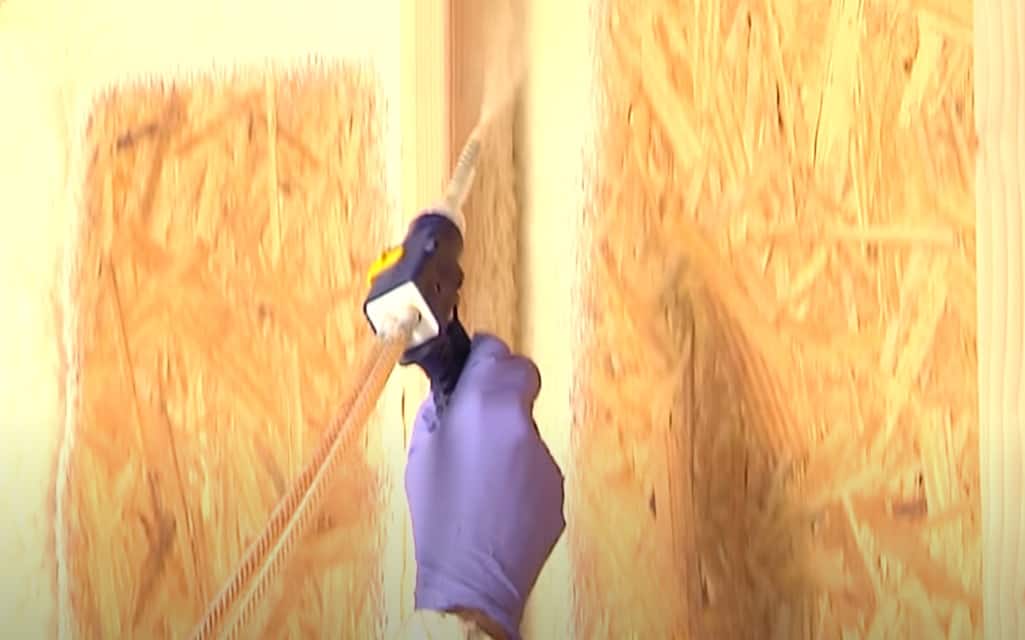Spray foam is produced from blending and reacting specific liquid components to make foam. Once the liquid is blended it reacts quickly, expanding upon contact to make a foam that seals gaps, insulates, and can create vapor and moisture barriers. Each kind of spray foam and method of application provide individualized advantages. There are typically three kinds of spray foams that are used for insulation and other purposes.
- High-density: Often utilized for roofing and exterior applications.
- Medium-density: Generally used for prolonged insulation, unvented attic application, and filling cavities of interior walls.
- Low-density: Used for filling interior wall cavities and unvented attic applications.
*R refers to the heat flow resistance and the higher the R-value of an insulation agent, the better the insulating capacity. Ask the seller for a fact sheet on the R-value. Spray foam products contain various R-values to meet the different performance requirements. For instance, various parts of a building or home benefit from varying insulating R-values and the local energy codes necessitate diverse R-values for various climates. All three kinds of spray foam can meet R-value needs for floors, walls, roofs, and ceilings for various climates. Home insulation contractors is specialized in providing the right spray foam type for the appropriate application.
Benefits Of High-Density Spray Foam
- Builders often use high-density spray foam where high strength and insulation values are required. As the name suggests, this type of foam has a denser composition than the other two types. It will not expand to the same extent than the lower density foams and necessitate more material for insulating and covering any given area.
- High-density spray foam is usually and excellent option for roofs or other types of insulation due to its monolithic and smooth nature. It can also lower energy costs substantially over the lifespan of a roof because of the thermal resistance components.
- It also provides enhanced protection against water and air infiltration and strengthens the structure where it is used. Your building will also have increase wind resistance.
Benefits Of Medium-Density Spray Foam
- Medium-density foam is used as a high or low-pressure two-component polyurethane spray foam. It provides individualized advantages, contingent on the type of building and the climate where it is utilized.
- Similar to low-density foam, this type of spray foam is often utilized for prolonged insulation, unvented attic applications, or cavity fill for interior walls.
- This closed-cell spray foam is generally used where the greatest R-value per inch is required. Medium-density spray foam performs as a vapor, air, and water barrier, and is also useful for noise reduction.
- This foam can also offer high bond and tensile strength. It can offer low vapor permeance and can often be influenced by moisture from wind-driven rain, for instance.
Read More: 7 types of forklifts used in the construction business
Benefits Of Low-Density Spray Foam
- Low-density polyurethane spray foam, often called open-cell foam is applied for providing continuous insulation and act as an air-sealing barrier. It is also known as ½ pound foam and weighs about 0.5lbs. per cubic foot. The open-cell structure offers some flexibility to hardened foam.
- This foam is used as a high-pressure, two-component polyurethane foam. It can be applied in unvented attics, to walls, ceilings, vented attics, ceilings, and crawl spaces. It is an air barrier, but penetrable to moisture and vapor. It is generally used for filling cavities in walls during the construction phase.
- Low-density foam remains relatively flexible and soft after curing, due to the moderately large cell structure. This increases the prolonged insulation value over the years when a building is prone to settling and shifting.
- Low-density spray foam is excellent for seals overflow and heat insulation through joints, cracks, and seams by filling the holes. It is also useful for noise reduction due to the open-cell structure and soft texture.



